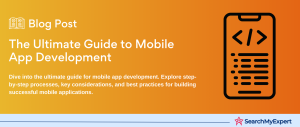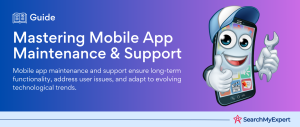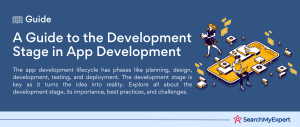Today, everyone’s using smartphones and spending a lot of time on mobile apps. For businesses, making a good mobile app is super important. So, how do you make sure your app is great before you fully build it? You create a prototype!
What is a Mobile App Prototype?
Think of a prototype as a draft version of your app. It’s a basic model that shows how your app will look and work. It’s not the final version but it gives everyone a good idea.
Why is a Prototype Important?
- Test Before Building: With a prototype, you can test if users like your app and if everything works well.
- Save Money: If you find problems early, it’s cheaper to fix them.
- Everyone’s on the Same Page: It helps your team and any other partners understand what the app will be like.
Things to Think About Mobile Prototypes
When making a mobile prototype, consider:
- Screen Size: Will it look good on all phone screens?
- User Interface: Is it easy for users to use?
- Which Devices: Will it work on iPhones, Android phones, or both?
- Performance: Does it work smoothly?
Tools to Help You Make a Prototype
- Sketch: A tool that helps you design the app.
- Figma: Lets teams work together on a design.
- Adobe XD: Helps you design and share your prototype.
Benefits of Using a Prototype
Imagine you’re making a fitness app. Before you build the whole thing, a prototype helps you:
- Quick Changes: If something’s not right, you can change it fast.
- Better User Experience: It makes sure users will love the app.
- Save Costs: Finding issues early means less money spent on big changes later.
- Clear Communication: Everyone involved can see and understand the app’s plan.
Different Kinds of Prototypes
- Sketch Prototype: Like a hand-drawn picture of the app.
- Low-Fidelity (Lo-Fi) Prototype: A simple digital version.
- High-Fidelity (Hi-Fi) Prototype: A detailed and interactive version.
- Interactive Wireframes: A basic digital outline of the app.
How to Make Your Prototype
- Set Goals: Understand who will use the app and what they need.
- Choose Your Tools: Decide which design tools are best for your app.
- Start Drawing: Begin with simple drawings, then make a digital version.
In short, a prototype helps turn your app idea into something you can see and test. It’s a smart way to make sure your app is the best it can be.
Steps in the Prototyping Process
After you’ve understood the basics, let’s dive deeper into the steps of making a prototype.
1. Gathering Ideas and Research
Before you start, gather your team and brainstorm ideas. Understand your users. Who are they? What do they want from your app? By answering these questions, you’ll have a clear direction.
2. Sketching the First Design
Grab some paper and pencils. Draw the basic layout of your app. Where will the buttons go? How will users move from one screen to the next?
3. Creating a Digital Draft
Now, move from paper to digital. Use design tools to create a more detailed draft of your app. This version, known as a Low-Fidelity (Lo-Fi) prototype, will help you see your app’s structure.
4. Adding Details and Interactions
Upgrade your draft to a High-Fidelity (Hi-Fi) prototype. This version will be more detailed. You can add colours, fonts, and images. You’ll also make parts of the app clickable. This way, you can simulate how the final app will work.
5. Getting Feedback
Share your Hi-Fi prototype with potential users, teammates, and stakeholders. Watch how they interact with it. Where do they get stuck? What do they like or dislike?
6. Refining Your Prototype
Using the feedback, make changes. You might need to redesign certain parts or add new features. It’s all about improving and getting closer to the final product.
7. Final Testing
Once you’re happy with the prototype, do a final round of testing. Ensure everything works smoothly and that users have a good experience.
Costs Involved in Prototyping
Building a prototype isn’t always free. While there are many free tools available, sometimes you might want features only available in paid versions.
- Design Tools: While tools like Figma have free versions, you might want premium features, which come at a cost.
- User Testing: Hiring users to test your prototype might cost money, especially if you want feedback from specific user groups.
- Expert Review: Getting feedback from design experts can be invaluable. However, their expertise comes with a fee.
Why Investing in Prototyping is Worth It
Yes, prototyping can cost time and money. But, it’s an investment. Here’s why:
- Avoid Costly Mistakes: Finding and fixing issues during the prototyping stage is cheaper than doing it after the app is built.
- Save Development Time: Developers will have a clear blueprint to follow, which can speed up the building process.
- Better Chance of Success: A well-thought-out app, refined through prototyping, is more likely to be loved by users and succeed in the market.
The Future of Prototyping
As technology continues to evolve, the realm of prototyping is not left behind. It’s essential to stay updated with the latest trends and advancements, ensuring that your app remains cutting-edge and relevant.
1. Integration with Advanced Technologies
In the coming years, mobile app prototyping will see tighter integration with technologies like Augmented Reality (AR) and Virtual Reality (VR). These technologies can provide a more immersive prototype experience, allowing users to interact with a simulated environment.
2. Automated User Testing
Artificial Intelligence (AI) and Machine Learning (ML) are set to revolutionize user testing. These technologies can simulate user behaviors, providing instant feedback on the prototype, thus reducing the time and cost of manual user testing.
3. Collaboration in Real-Time
Remote work and collaboration tools are gaining traction. The future will see prototyping tools that emphasize real-time collaboration, allowing teams spread across the globe to work seamlessly together.
4. Increased Emphasis on Microinteractions
Microinteractions are subtle design touches that enhance user experience. Think of the ‘like’ button animation on social media platforms. In the future, prototyping will delve deeper into these details, ensuring that even the smallest interactions are thoughtfully designed.
5. More Inclusive Design Prototyping
There’s a growing awareness of the need for inclusivity in app design, ensuring that apps are accessible to everyone, including those with disabilities. Prototyping tools of the future will incorporate features that allow designers to create prototypes keeping inclusivity in mind.
Prototyping Challenges and Solutions
Every process comes with its unique set of challenges, and prototyping is no exception. While it’s an essential part of the app development cycle, designers and developers often face obstacles along the way. Let’s delve into some of these challenges and the solutions to tackle them.
1. Overcomplicating the Prototype
Challenge: There’s always a temptation to add all the bells and whistles in the prototype stage. This can lead to an overly complicated prototype, making it hard to gather clear feedback.
Solution: Always return to the primary objectives. Remember, the prototype’s purpose is to visualize and test the core functionalities of the app. It’s not the final product. Stick to essential features and avoid overloading the prototype.
2. Struggling to Get Genuine Feedback
Challenge: Sometimes, users might provide feedback they think you want to hear, rather than their genuine opinions, leading to skewed insights.
Solution: Create an environment where users feel comfortable sharing honest feedback. Use open-ended questions and reassure them that all feedback, positive or negative, is valuable.
3. Prototype Doesn’t Reflect Actual Device Experience
Challenge: Sometimes, the prototype might not emulate the real experience on a device, especially concerning performance or responsiveness.
Solution: Use tools that allow for device-specific prototyping. Additionally, once the high-fidelity prototype is ready, test it on actual devices to get a more accurate feel.
4. Time Constraints
Challenge: Prototyping can be time-consuming, especially when there are tight deadlines for project completion.
Solution: While it’s essential not to rush the process, setting clear milestones and using tools that streamline design can help keep the prototyping phase within the desired timeframe.
5. Managing Stakeholder Expectations
Challenge: Stakeholders might have different visions or expectations for the app. Balancing these views while staying true to the user’s needs can be tricky.
Solution: Use the prototype as a communication tool. It provides a tangible representation of the app’s direction, making it easier to align all parties. Encourage stakeholders to give feedback early in the prototyping process to ensure a unified vision.
The Evolution of Mobile App Prototyping
As the tech world continues to innovate at breakneck speeds, the world of prototyping isn’t static. Designers and developers can anticipate further shifts and evolutions in the realm of prototyping.
1. Integration of 3D Design and Prototyping
With technology like Apple’s ARKit and advances in 3D graphic design, future prototypes might involve three-dimensional design elements, giving an even more immersive feel.
2. Real-time Data Integration
Prototypes of the future might integrate real-time data, allowing for dynamic testing environments that closely mimic the final product’s live environment.
3. Voice-activated Prototypes
As voice interfaces like Siri, Alexa, and Google Assistant become more prevalent, voice-activated prototyping could emerge as a new frontier, especially for apps focusing on voice interaction.
In Conclusion
Mobile app prototyping, while an intensive process, is undeniably crucial in the app development lifecycle. It not only shapes the final product but also acts as a litmus test for ideas, helping refine them into user-friendly applications. As technology continues its relentless advance, those in the world of app development should remain adaptable, always ready to incorporate new techniques and tools into their prototyping process, ensuring that the apps they produce remain relevant and user-centric.
Discover a world of exceptional App Developers today.
Table of Contents
Toggle






